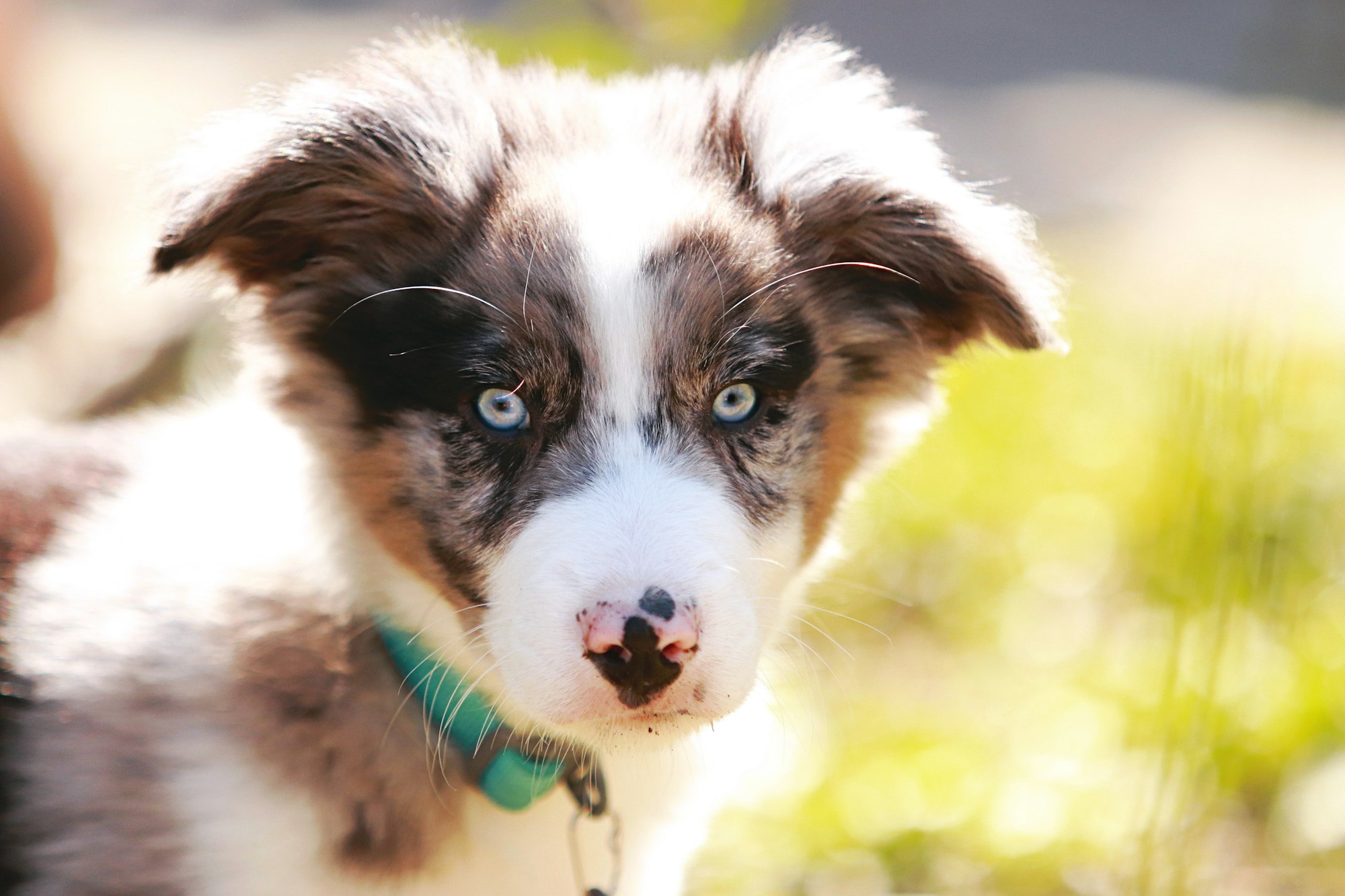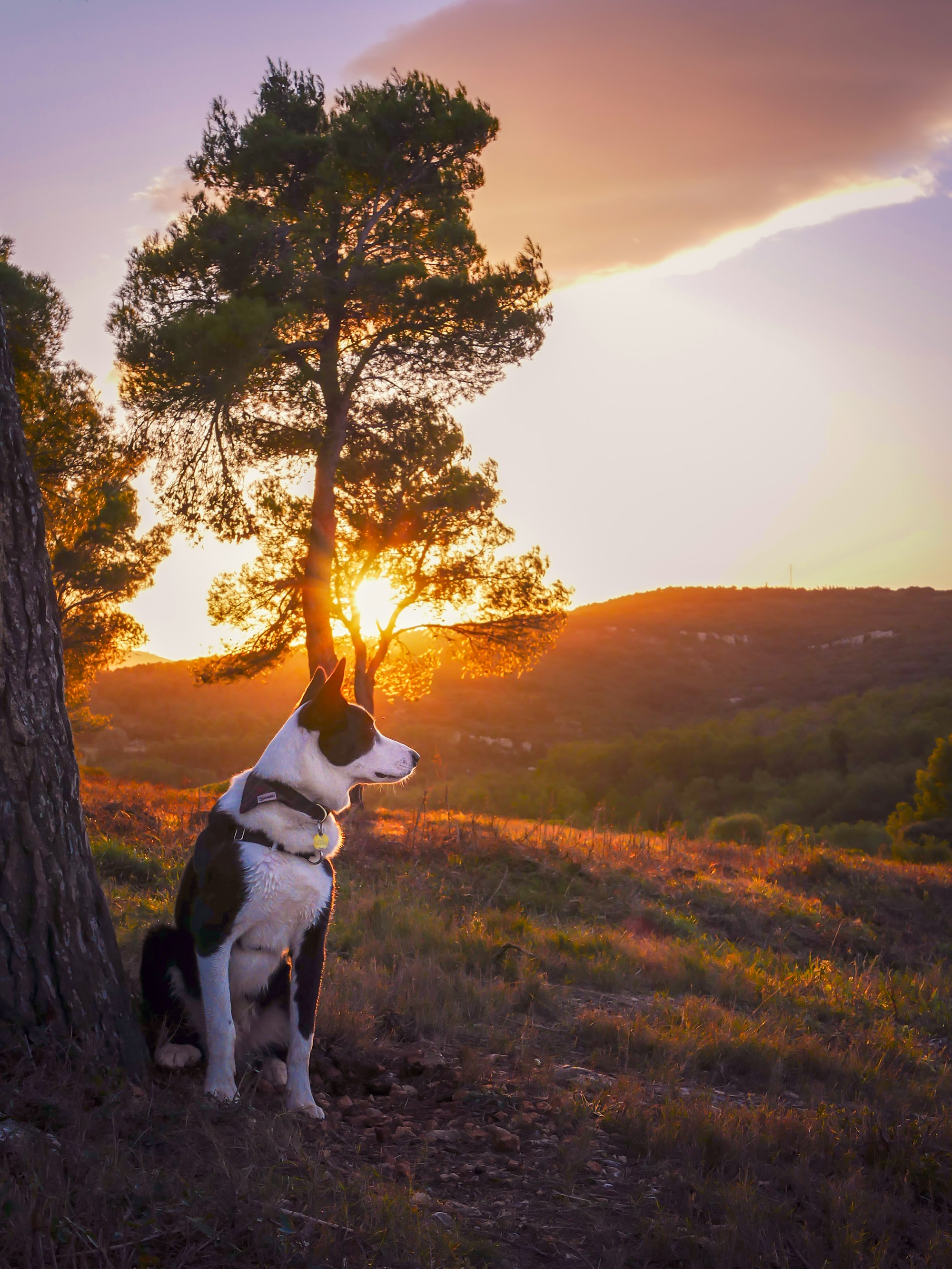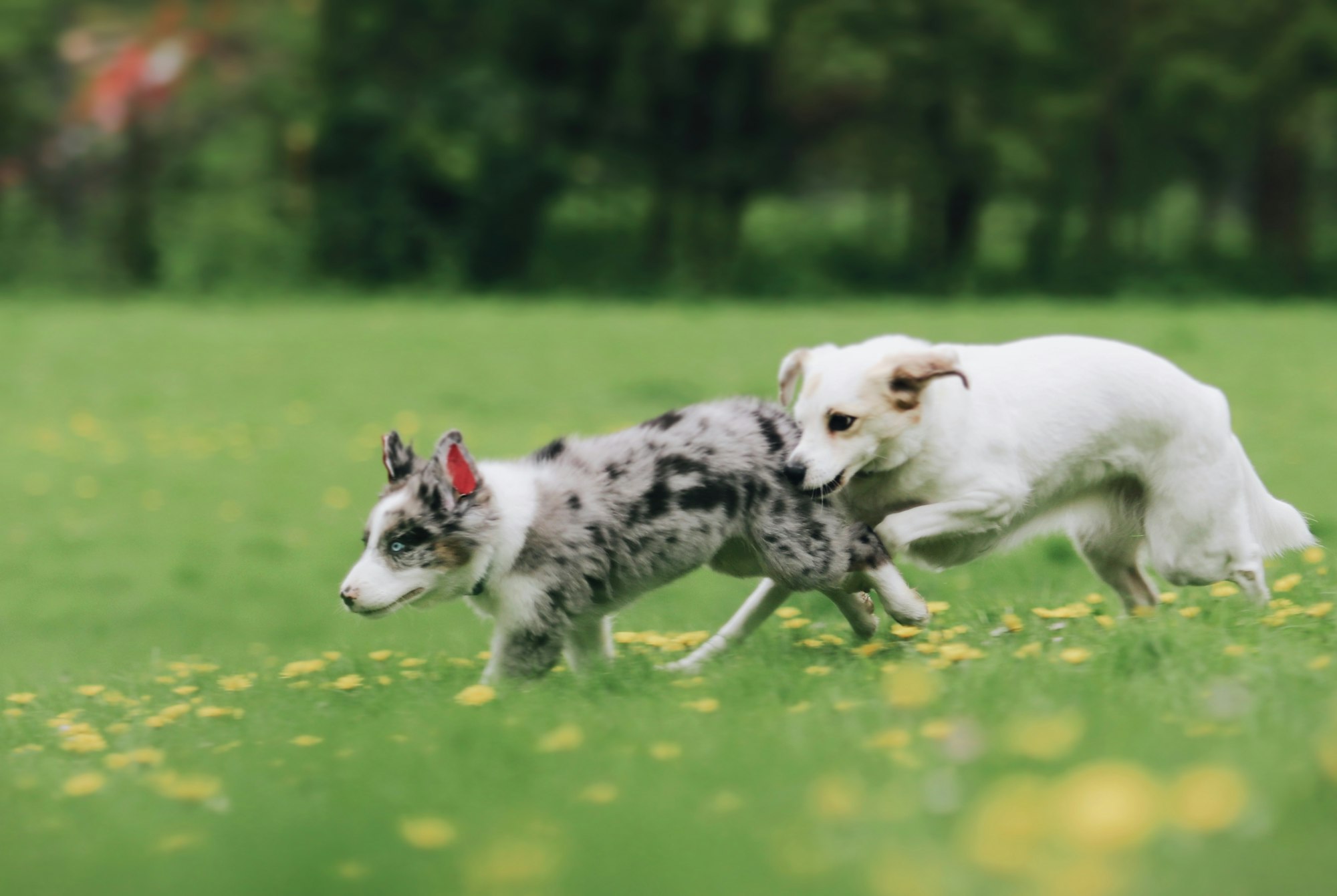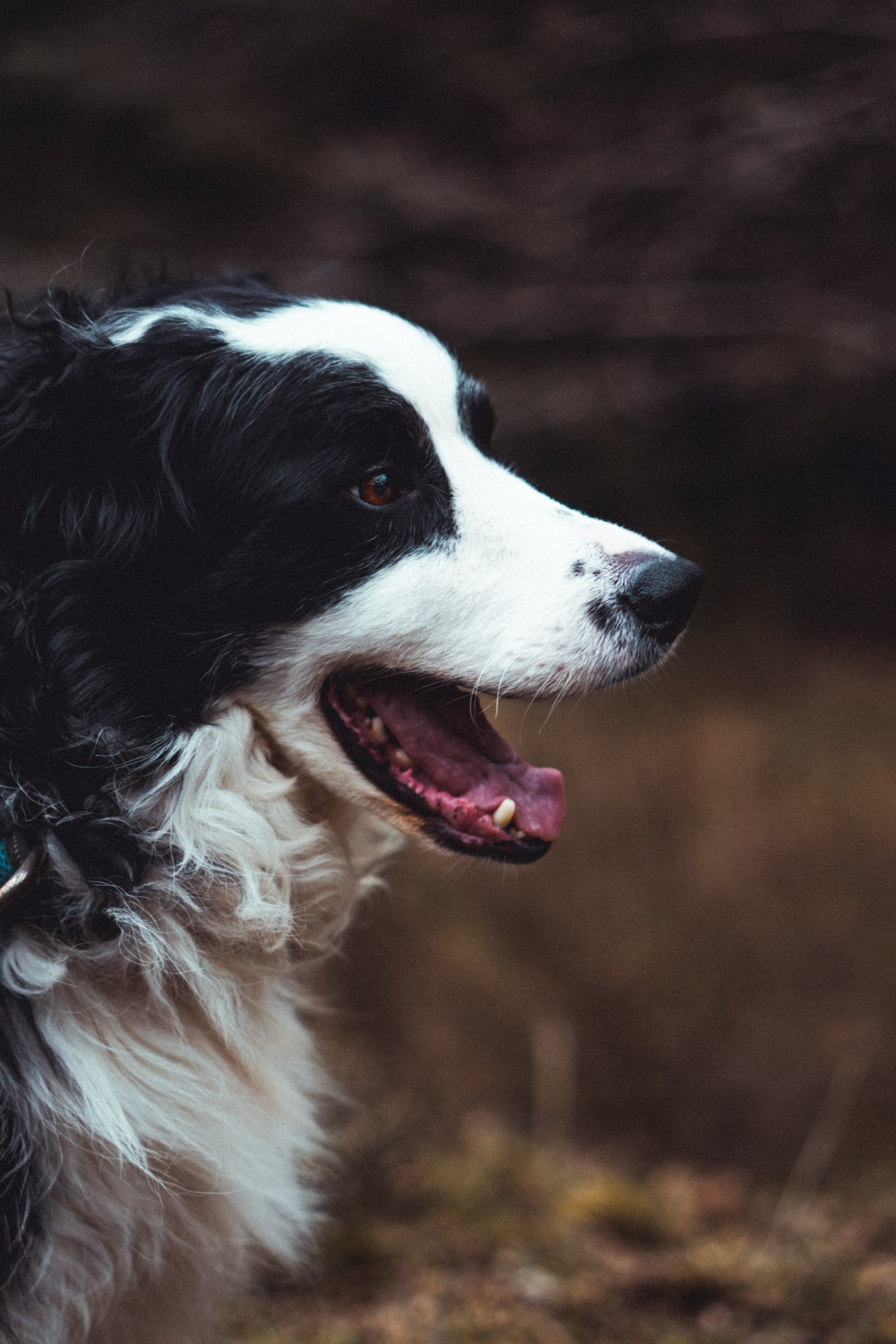Ever found yourself pondering the age-old question: "Are Border Collies good with cats?" Well, you're not alone. As the proud owner or prospective owner of a Border Collie, it's only natural to wonder if this intelligent and agile breed can coexist harmoniously with our feline friends. Let's break down the facts and uncover the real scoop.

Understanding the Border Collie
To get to the heart of the matter, it's essential to first understand the nature and temperament of the Border Collie. Known for their sharp intellect and boundless energy, Border Collies are primarily herding dogs. This herding instinct is deeply ingrained, driving them to round up anything from sheep to, yes, sometimes even cats.
The Cat Factor
Cats, on the other hand, are fiercely independent creatures, often with a strong territorial streak. They value their space and don't always take kindly to being herded or chased. So, how do these two distinct personalities mesh?
The Herding Instinct and Feline Dynamics
The Border Collie's innate herding instinct, coupled with their smart cognition, can sometimes shed light on a complex dynamic with cats. While some felines might view their behavior as playful, indulging in a spirited chase, others might perceive it as a threat. Understanding and addressing this smart breed's tendencies, especially as they shed their initial apprehensions, is crucial during the nascent stages of their bond with cats.
Border Collie Temperament with Cats
Generalizing the temperament of Border Collies can be misleading. While they have a natural instinct to herd, many are also gentle, and affectionate, and can be trained to respect boundaries. Early socialization plays a crucial role. Border Collies introduced to cats at a young age tend to develop a more understanding and patient relationship with them.
Training and Socialization: The Key to Harmony
Introducing a Border Collie to a cat requires a methodical approach:
- Initial Separation: Begin by keeping them in separate rooms. This allows them to get accustomed to each other's scent without direct interaction.
- Controlled Introduction: Introduce them in a neutral space, ensuring both animals feel safe.
- Positive Reinforcement: Reward both pets for calm and non-aggressive behavior.
- Consistency: Maintain consistent rules and boundaries to ensure both pets understand their limits.
Factors Influencing Their Relationship
Several factors can influence the relationship between Border Collies and cats:
- Age of Introduction: Younger animals tend to adapt and accept each other more readily.
- Individual Personalities: Just like humans, pets have unique personalities. Some Border Collies might be more tolerant, while some cats might be more adventurous.
- Training: A well-trained Border Collie is less likely to exhibit aggressive herding behavior.
The Environment's Role in Fostering a Positive Relationship
The environment in which Border Collies and Cats interact plays a pivotal role in shaping their relationship.
Space and Territory
Both cats and Border Collies value their own space. It's crucial to ensure that your living environment allows both animals to have their own "safe zones." For cats, this might mean a high perch or a secluded corner, while for Border Collies, a specific resting spot or play area can be beneficial.
Interactive Play Sessions
One of the best ways to foster a positive relationship between your Border Collie and cat is through supervised play sessions. Toys that encourage joint play, like laser pointers or feather wands, can help both pets see each other as playmates rather than threats. Over time, these joint sessions can solidify their bond.
Monitoring and Adjusting
It's essential to continuously monitor their interactions, especially in the initial stages. If you notice signs of stress or aggression from either pet, it's crucial to intervene and, if necessary, consult with a pet behaviorist. Sometimes, minor adjustments in their routine or environment can make a significant difference.
The Role of Pet Parents
As a pet parent, your attitude, patience, and understanding are the glue that holds this relationship together. Here are some proactive steps you can take:
- Education: Familiarize yourself with the behavioral cues of both Border Collies and Cats. This knowledge will help you anticipate potential issues before they escalate.
- Commitment: Understand that building a harmonious relationship might take time. Commit to the process and celebrate small milestones.
- Seek Expertise: If you're unsure or facing persistent challenges, don't hesitate to seek advice from veterinarians or pet behaviorists. They can offer valuable insights tailored to your unique situation.

Long-Term Relationship Dynamics
As the days turn into weeks and weeks into months, the relationship between your Border Collie and cat will evolve. Here's a glimpse into the long-term dynamics you might observe.
Mutual Respect and Boundaries
Over time, both pets will learn each other's boundaries. The cat might realize that certain playful swats or hisses deter the Border Collie from being too boisterous, and the Border Collie might discern the cat's body language signaling "enough is enough." This mutual understanding helps in establishing respect.
Sharing Spaces
While initially, you might have designated separate zones for each pet, you may start to notice them willingly sharing spaces. It's not uncommon to find a Border Collie and a cat curled up on the same couch or even grooming each other. These shared moments signify trust.
Joint Activities
Beyond just play, your Border Collie and cat might engage in joint activities. They might gaze out of the window together, watching the world go by or even engage in mutual grooming sessions. Such activities further solidify their bond.
Potential Challenges and Solutions
No relationship is without its challenges, and the same holds for our pets.
- Jealousy: Just like humans, pets can get jealous. If one gets more attention, the other might act out. The solution is to ensure both pets receive equal love and attention. Set aside individual playtime for each and also joint sessions.
- Resource Guarding: This refers to either pet becoming possessive about food, toys, or even specific resting spots. To tackle this, ensure both pets have their own set of resources. Over time, as trust builds, they might willingly share.
Continuous Learning and Adaptation
As pet parents, it's crucial to be observant and continually adapt based on the dynamics between your Border Collie and cat. Their relationship is a living entity, evolving with time, and your role is to facilitate and nurture this bond.
Beyond the Initial Phase: Growing Older Together
As the years roll by, the relationship between your Border Collie and cat will undergo various stages, much like any long-term companionship. The playful antics of youth may give way to a more serene coexistence, but the bond remains unbroken.
Aging and Changing Dynamics
As pets age, their energy levels, health, and temperament can undergo changes. A once energetic Border Collie might prefer lounging, while a previously aloof cat might seek more affection. Recognizing and accommodating these changes ensures both pets continue to live comfortably together.
Health Considerations
Health issues can crop up in older pets. Arthritis, vision problems, or other age-related ailments might make them less tolerant or more irritable. Being proactive in addressing health concerns and providing a comfortable environment is crucial. Regular vet check-ups, proper medication, and dietary adjustments can help manage these issues.

Emotional Support
Pets, like humans, can sense when their companions are unwell or stressed. It's beautiful to observe how they provide emotional support to each other during tough times. A Border Collie might gently nuzzle a sick cat or stay by its side, and a cat might purr and rub against an aging dog, providing comfort.
The Final Chapter: Dealing with Loss
One of the most challenging aspects of having multiple pets is dealing with the loss of one. Pets mourn, and it's essential to recognize and address their grief. If one pet passes away, the surviving one might show signs of depression, such as reduced appetite, lethargy, or vocalizing.
- Provide Extra Attention: The surviving pet will require additional love and care. Spend more time with them, offering comfort and distraction.
- Maintain Routine: Keeping a regular routine helps provide a sense of normalcy and security.
- Consider Professional Help: If the surviving pet's grief seems prolonged or severe, consult with a veterinarian. They might recommend therapies or even introduce a new companion.
The Legacy They Leave Behind
Every pet leaves an indelible mark on our hearts, and when they share a home, their stories intertwine, creating a tapestry of memories that resonate for years to come.
Lessons in Unity and Diversity
One of the most significant takeaways from observing a Border Collie and a cat cohabitate is the lesson in unity amidst diversity. Two species, with distinct evolutionary histories and behavioral traits, coming together under one roof, showcases the possibility of harmony despite differences. It's a lesson that extends beyond the realm of pets and offers insights into broader societal dynamics.
Moments of Unexpected Joy
The combined antics of a Border Collie and cat can be a never-ending source of amusement and joy. Be it the playful chases, the shared moments of tranquility, or the times when they team up to create mischief, these memories are the ones that often bring a smile on a gloomy day.
The Power of Adaptability
Both the Border Collie and the Cat teach us about adaptability. Their ability to adjust to each other's presence, learn from each interaction, and evolve their behavior for mutual benefit is commendable. In a world that's constantly changing, this adaptability is a trait worth emulating.
The Bond that Transcends Time
Even when they're no longer with us, the stories of their camaraderie, the lessons they've imparted, and the love they've shared continue to echo. Photographs, toys, or even specific spots in the house serve as reminders of the time spent together.
Honoring Their Memory
Many pet parents choose to honor the memory of their beloved pets in various ways:
- Memorial Spots: Creating a dedicated spot in the house or garden with their favorite toys or a plaque.
- Tales and Stories: Sharing their stories with friends, family, or even on social platforms can be therapeutic and a way to keep their memory alive.
- Adoption: In honor of their pets, some individuals choose to adopt or rescue another animal, providing them with a loving home.
The Continuum of Companionship
The relationship between a Border Collie and a cat is emblematic of the broader spectrum of interspecies relationships. Their shared experiences shed light on the fundamental truths about companionship, love, and coexistence.
The Ripple Effect on the Household
The harmony between a Border Collie and a cat doesn't merely remain confined to them; it reverberates throughout the household. Their camaraderie sets a positive tone, fostering a peaceful ambiance.
- A Lesson for Young Minds: For households with children, the relationship between these pets becomes a living lesson in understanding, acceptance, and friendship. Children observe, internalize, and often emulate the harmony they witness.
- A Sanctuary of Peace: For many adults, coming home to see a Border Collie and cat in peaceful coexistence provides a sanctuary from the outside world's stresses. It's a gentle reminder of the simple joys of life.
Beyond the Four Walls: Impacts on the Community
The tales of a Border Collie's bond with a cat often extend beyond the confines of a home. Neighbors, friends, and extended family witness and partake in this unique relationship.
- Inspiring Others: Hearing or witnessing their bond might inspire others to consider multi-pet households, breaking preconceived notions about interspecies compatibility.
- Community Gatherings: Pets often become focal points around which community interactions happen. Whether it's a playful romp in the park or a shared pet-care tip, they catalyze human connections.

The Bigger Picture: Nature's Interconnectedness
The bond between a Border Collie and a cat is but a small window into the vast interconnectedness of nature. Across ecosystems, diverse species coexist, collaborate, and even form symbiotic relationships.
- Ecological Lessons: Their relationship can be a starting point for exploring broader ecological concepts. From the symbiosis between clownfish and anemones to the mutual benefits between bees and flowers, nature is replete with examples of interspecies collaboration.
- Conservation Implications: Understanding and appreciating interspecies bonds can also inform conservation efforts. It underscores the importance of preserving diverse habitats where such relationships flourish.
Conclusion:
In exploring the dynamic between Border Collies and Cats, we've journeyed through the nuances of interspecies relationships, from initial adjustments to enduring bonds. Their interactions, rooted in understanding and adaptability, offer a microcosm of nature's broader interconnectedness. Their bond teaches us about unity amidst diversity, the importance of early socialization, adaptability, and the ripple effect of harmony within a household and community.
As they navigate challenges, age gracefully together, and even face loss, their relationship serves as a poignant reminder of life's cyclical nature and the timeless essence of companionship. In their story, we find reflections of nature's vast, intricate tapestry of relationships.
Frequently Asked Questions (FAQs):
- Are Border Collies good with cats?
- While individual personalities vary, with proper training and early socialization, many Border Collies can coexist harmoniously with cats. Their natural herding instinct might pose initial challenges, but understanding and patience can foster a strong bond.
- How can I introduce my Border Collie to my cat?
- Start with controlled and supervised introductions in a neutral space. Allow them to get accustomed to each other's scent initially. Gradual and positive reinforcement techniques work best.
- Do Border Collies' herding instincts affect their behavior with cats?
- Yes, Border Collies have a natural inclination to herd, which can sometimes lead to them trying to "corral" cats. However, with proper training, this behavior can be managed.
- Can a Border Collie and a cat share the same living space?
- Absolutely. With clear boundaries, separate resting spaces, and mutual respect, both pets can comfortably share the same living environment.
- What should I do if my Border Collie chases the cat?
- It's essential to intervene and set boundaries. Consistent training and positive reinforcement can help reduce chasing and promote peaceful coexistence.
- How do age and early socialization impact the relationship between Border Collies and cats?
- Early socialization, especially when both pets are young, often leads to a smoother relationship. They learn to understand and respect each other's boundaries from an early age.
- Are there any health considerations when keeping Border Collies and cats together?
- Regular health check-ups for both pets are crucial. Monitoring their interactions, especially if one pet is unwell, ensures that neither faces undue stress or discomfort.
- How do I manage resource guarding between my Border Collie and cat?
- Ensure both pets have their own set of resources, like food bowls and toys. Over time, as trust builds, they might willingly share.
- What are the signs of a successful bond between a Border Collie and a cat?
- Signs include mutual grooming, shared resting spaces, playful interactions, and a lack of aggressive behavior.
- How can I strengthen the bond between my Border Collie and cat?
- Joint play sessions, consistent training, and ensuring both pets have their individual needs met can further solidify their bond.

